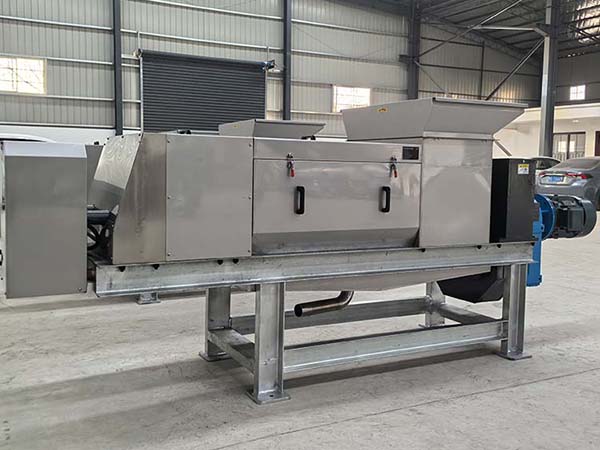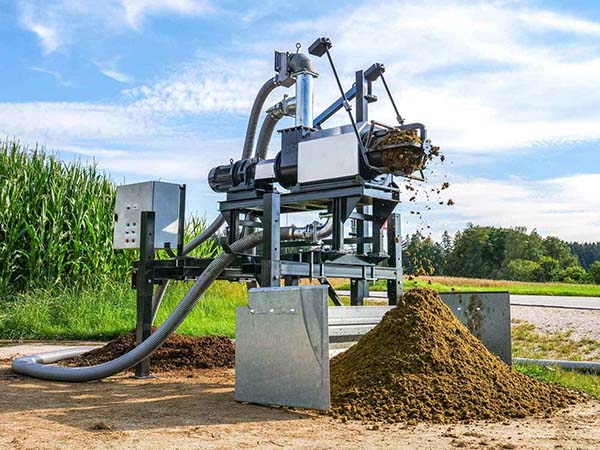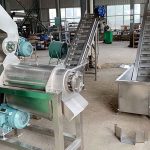
Industrial Juicer Machine FAQs
03/07/2025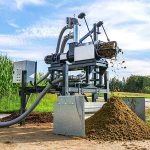
Troubleshooting Common Issues with Screw Manure Separator
04/10/2025
Industrial Juicer Machine FAQs
03/07/2025
Troubleshooting Common Issues with Screw Manure Separator
04/10/2025Wet sawdust, with moisture content often exceeding 70%, is heavy, costly to transport and store, and difficult to further purpose. At Furui Machinery, we specialize in screw press dewatering machines that quickly remove moisture from sawdust, making it easier to reuse or sell, which is an ideal choice for businesses involved in wood processing and sawmill operations. In this post, we will explore the importance of dewatering sawdust, how the process works, its benefits, applications of dewatered sawdust, and more.
Why Dewater Sawdust?
Sawdust is a challenging byproduct due to its high moisture content, which makes it bulky, difficult to handle, and expensive to transport. Dewatering sawdust helps address these issues, offering several key advantages for businesses and investors:
1. Lower Transport and Storage Costs
The wet sawdust is heavier, leading to higher transportation costs. Additionally, it is difficult to store due to leakage. Dewatering reduces its moisture content, decreasing both its weight and volume, making it more cost-effective to transport and store.
2. Improved Processing Efficiency
The dewatered sawdust is with lower water content, which makes it easier to further process it into valuable products such as briquettes, pellets, and animal bedding. It is also more stable and easier to handle, leading to improved efficiency in subsequent processing stages.
3. Energy Savings in Drying Processes
Pre-dewatering can reduce the energy required for thermal drying by 30-50%, resulting in significant cost savings for industries like biofuel production, which rely on dried sawdust.
4. Environmental Benefits
Reducing the moisture content in sawdust means less waste is sent to landfills. Additionally, the removal of water ensures that the sawdust can be used as a biofuel in pelletizing or briquette production, promoting sustainability.
5. Higher Market Value
Dewatered sawdust sells at a higher price due to its improved quality and ease of handling. Biomass pellet producers, for example, are willing to pay 80-120/ton for sawdust with less than 15% moisture, compared to just 30-50/ton for wet sawdust.
Uses of Dewatered Sawdust
Dewatered sawdust can be widely used across various industries.
1. Wood Pellet Production
The processed sawdust can be used in wood pellet manufacturing or briquettes, a key source of renewable heating energy.
2. Animal Bedding
Dewatered sawdust is widely used as bedding for livestock, poultry, and other animals. Its absorbent nature helps control moisture and odors in animal housing, providing a comfortable and hygienic environment.
3. Soil Amendment
Dewatered sawdust is used in gardening and agriculture as an organic soil amendment. It improves soil structure, enhances aeration, and increases water retention.
4. Composite Materials
Sawdust can be combined with other materials to create composite products like particleboard, MDF (Medium Density Fiberboard), and plywood.
5. Organic Fertilizers
Dewatered sawdust, once processed, can serve as a component in the production of organic fertilizers, helping to promote sustainable agriculture.
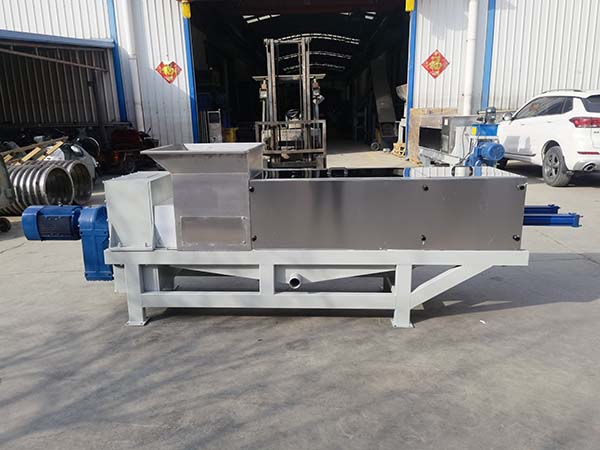
Dewatering Press Machine
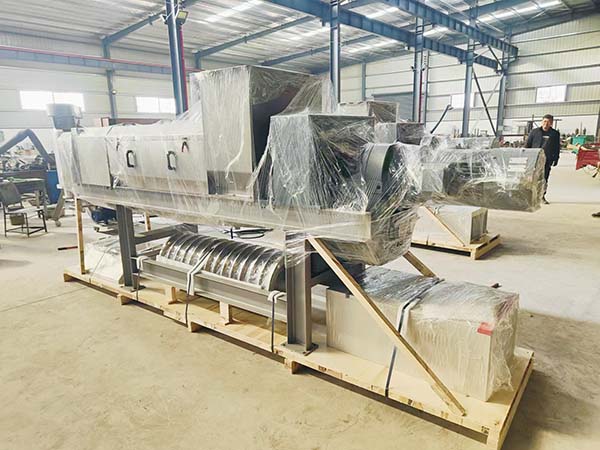
Screw Press to Sri Lanka
Key Advantages of Sawdust Dewatering Machine
Compared to conventional drying techniques, a sawdust dewatering press offers multiple benefits:
- High Efficiency & Energy Savings - Rapid dewatering reduces processing time and lowers energy costs.
- Eco-Friendly & Safe - Operates in a closed system, preventing dust and emissions while minimizing fire risks.
- Wide Compatibility - Works with various wood types (pine, eucalyptus, cedar, etc.).
- Space-Saving - Reduces sawdust volume, simplifying storage and transportation.
- Easy Operation & Maintenance - Automated controls and a simple structure ensure low upkeep costs.
How Does a Sawdust Dewatering Machine Work?
Sawdust dewatering machines are designed to remove excess moisture from sawdust, wood chips, and other wood waste. The dewatering process consists of three main parts:
- Feeding System - The process begins when the sawdust is fed into the machine through the feeding hopper.
- Pressing Mechanism – Inside the machine, a screw shaft rotates, pushing the sawdust forward along the length of the chamber. The screw shaft is equipped with spiral blades, and as the sawdust moves forward, the space between these blades and the surrounding filter screen gradually decreases.
- As the gap narrows, the pressure increases. This increasing pressure forces the moisture out of the sawdust, which is then expelled through the perforations in the filter screen.
- Finally, the dewatered sawdust reaches the discharge outlet at the end of the machine.
Applications of Sawdust Screw Press Machine
Our screw press machines have a wide range of applications across various industrial and agricultural fields, such as
-
Paper Industry: In the paper industry, screw press dewatering machines are used for pulp preparation. They process raw materials such as wood and waste paper into fibrous material for subsequent pulping and papermaking processes.
-
Wood Processing: In the wood processing industry, these machines convert logs into wood chips or sawdust, which are then used to produce wood-based panels, fiberboards, and particle boards for construction materials.
-
Food Processing: In the food processing industry, our screw presses are used to extract juice from vegetables and fruits. It is also used to process food or fruit/vegetable waste.
-
Biomass Energy Production: Biomass materials like straw, grass, sawdust, and corn stalks can be processed into silage or pelletized fuel using these machines. The resulting biomass fuel is used for power generation or heating, contributing to renewable energy production.
Conclusion
The sawdust dewatering machine is a game-changer for wood processing industries, offering a fast, eco-friendly, and cost-efficient way to manage sawdust waste. Furui Machinery also offers free material testing - just send us sample materials and we will test and show you moisture reduction results. Welcome to contact us for more information.


